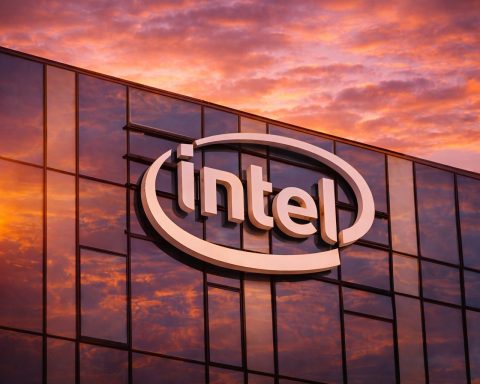Key Facts (Oct 2 2025)
- Stock price and volatility: Rivian Automotive Inc. (NASDAQ: RIVN) closed at ≈$13.57 on 2 Oct 2025, down roughly 7.1 % from the previous day. The intraday range was $13.37–14.15 and the stock has traded between $9.5 and $17.15 over the past year [1]. Historical data shows the stock closing at $14.61 on 1 Oct and $14.68 on 30 Sep, with daily lows around $14.55–14.59 and unusually high trading volumes [2].
- Q3 2025 production and deliveries: Rivian produced 10,720 vehicles and delivered 13,201 vehicles in Q3 2025 [3]. The company narrowed its 2025 delivery guidance to 41,500–43,500 vehicles [4].
- Financial highlights: In early 2025 Rivian achieved its first positive gross profit ($206 million) and a gross margin of ~17 % [5]. Analysts see progress in cost reduction and platform efficiencies but remain cautious due to continued losses and heavy investment requirements.
- Strategic partnerships: Rivian formed a joint venture with Volkswagen worth up to $5.8 billion to develop next‑generation EV technology and share R2/R3 platforms [6]. The company also collaborates with HelloFresh and Amazon on commercial electric delivery vans [7].
- Product development: Hundreds of production‑intent R2 crossovers are undergoing final road validation with hard‑tooled parts to ensure they closely mirror the final vehicles [8]. Rivian’s new $1 billion plant in Georgia is slated to produce R2 and R3 vehicles starting in 2028 and is expected to create 7,500 direct jobs [9].
- Industry headwinds: The U.S. $7,500 EV tax credit for leases expired on 30 Sep 2025. Reuters reports that Rivian lowered its guidance partly because the credit’s expiration and high tariffs on imported components could depress EV demand and raise costs [10].
- Competitors: Tesla delivered ≈497,099 vehicles in Q3 2025 (mostly Model 3 and Y) thanks to a rush before the tax credit expiry, but analysts expect a slump afterward [11]. Ford and GM launched programs to effectively extend the lease credit by purchasing vehicles through their financing arms and passing the subsidy to customers [12].
Stock Performance and Recent Volatility
Rivian’s shares have been volatile in the days leading up to 2 Oct 2025. On 1 Oct the stock closed at $14.61 after opening near $14.79 and trading between $14.59 and $15.06 [13]. A day earlier, on 30 Sept, the shares closed at $14.68, with a high of $15.51 and a low of $14.55 [14]. By 2 Oct the price fell to around $13.57, down about 7 % from the prior day, reflecting investor concern about guidance cuts and broader EV market weakness [15].
The 52‑week range for RIVN is $9.5–17.15 [16], illustrating considerable volatility. Despite the recent drop, the stock has gained ≈37 % over the past year and about 13.5 % in the last three months [17], indicating momentum earlier in the year when Rivian announced partnerships and cost‑reduction initiatives. Nevertheless, the market remains sensitive to production guidance and macro headwinds.
Financial Outlook and Analyst Forecasts
Positive Gross Profit and Platform Efficiencies
Rivian surprised investors in early 2025 by reporting two consecutive quarters of positive gross profit. In Q1 2025 it generated $206 million in gross profit with a 17 % gross margin [18]. This progress reflects cost reductions, improved manufacturing efficiency and price discipline. Analysts expect margins to improve further when the R2 platform launches, because the company plans to reduce material costs and streamline design [19].
Delivery Guidance Adjustment
The company still operates at a net loss, and its cash burn rate remains high. On 2 Oct 2025 Rivian announced Q3 production and deliveries—10,720 produced and 13,201 delivered—and narrowed its 2025 delivery guidance to 41,500–43,500 vehicles [20]. Analysts interpret the lowered midpoint (down from 40,000–46,000) as a cautious move reflecting demand uncertainty after the tax credit’s expiry [21]. Rivian will release its Q3 financial results on 4 Nov 2025 with an audio webcast [22], at which point analysts will update earnings forecasts.
Joint Venture with Volkswagen
In mid‑2025, Rivian formed a joint venture with Volkswagen worth up to $5.8 billion to co‑develop next‑generation EV technology and the R2 platform [23]. Analysts view this alliance as a way to share platform costs, broaden the addressable market and accelerate development timelines. Volkswagen’s global footprint could allow R2‑based vehicles to reach Europe and other markets more quickly.
Analyst Sentiment
Financial commentators are cautiously optimistic. MarketBeat writers note that Rivian’s positive gross profit and technology partnerships signal improving fundamentals, yet they emphasise that the company must scale production, reduce costs and reach profitability before investors can justify high valuations [24]. The narrowed delivery guidance and external headwinds (tax credit expiry, tariffs) have led to short‑term pessimism; however, many analysts highlight that Rivian’s robust order backlog, R2 launch and joint venture support long‑term growth prospects.
Recent Company News (late Sep–Oct 2 2025)
- Production and delivery results: On 2 Oct Rivian announced that it produced 10,720 vehicles and delivered 13,201 in Q3 2025. The company tightened its 2025 delivery guidance to 41,500–43,500 vehicles and said its results were in line with expectations [25].
- Guidance cut drives share decline: Reuters reported that Rivian’s shares dropped more than 7 % as investors reacted to the guidance adjustment and concerns that the expiration of the U.S. $7,500 EV tax credit and high tariffs on imported parts could depress demand and raise costs [26].
- Final road validation for R2 crossovers: The R2 is Rivian’s upcoming crossover platform aimed at the mid‑price market. Hundreds of production‑intent R2 vehicles entered final road validation in early October. The tests use hard‑tooled parts that closely mirror final production components to validate autonomy, durability and safety systems [27]. This signals that R2 remains on track for production starting in 2026.
- Georgia plant investment: Rivian continues building a $1 billion manufacturing plant in Georgia. CEO RJ Scaringe said the facility will create 7,500 jobs and produce next‑generation R2 and R3 crossovers starting in 2028 [28]. The plant will be developed in phases and is expected to have capacity for 400,000 vehicles per year, using advanced environmental management and integrating with the local community [29].
Developments in the EV Industry
The expiration of the U.S. EV tax credit for leases on 30 Sept 2025 is the dominant storyline. Reuters notes that high tariffs on imported auto parts and the loss of the $7,500 federal credit have darkened the outlook for EV manufacturers, compressing margins and dampening demand [30]. Rivian’s guidance cut is partly attributed to these factors. Meanwhile, several competitors made headlines:
- Tesla: Tesla delivered ≈497,099 vehicles in Q3 2025, mainly Model 3 and Y, benefiting from customers rushing to purchase before the tax credit expired [31]. Analysts expect Tesla’s deliveries to decline in Q4 due to the credit’s expiry. The article also mentions an extraordinary proposed CEO compensation plan for Elon Musk worth up to $1 trillion if aggressive market and operational targets are met [32].
- Ford and GM: Anticipating a slump in EV demand after the credit expiration, Ford and GM created programs through their financing arms to purchase vehicles in inventory and pass the $7,500 credit to customers via competitive lease payments [33]. This strategy aims to maintain demand through the end of 2025. Dealers had warned that EV sales would plummet without the incentive [34].
- Other competitors: Companies like Lucid and Fisker remain smaller players relative to Rivian and Tesla; they continue to struggle with scaling production and are likewise exposed to the tax credit sunset and high input costs.
Strategic Partnerships and Product Announcements
- Volkswagen alliance: Rivian’s joint venture with Volkswagen (worth up to $5.8 billion) supports development of the R2 and R3 platforms, giving Rivian access to Volkswagen’s global manufacturing scale and supply chain and allowing Volkswagen to tap into Rivian’s software and skateboard technology [35].
- Commercial vehicle partnerships: Rivian continues supplying electric delivery vans to Amazon and has expanded to corporate customers like HelloFresh, which uses Rivian vans to deliver meal kits [36]. This commercial segment provides recurring revenue and helps improve factory utilization.
- Georgia plant and jobs: The new Georgia plant under construction will support production of R2 and R3 crossovers and is expected to create thousands of direct and indirect jobs [37].
Regulatory and Market Challenges
Rivian faces headwinds that could slow adoption and squeeze margins:
- Tax credit expiration: The U.S. federal tax credit for leased EVs expired on 30 Sep 2025. Rivian and other automakers fear this will reduce consumer demand; Reuters notes the expiry contributed to Rivian lowering its delivery guidance [38].
- High tariffs and supply chain costs: Increased tariffs on imported batteries and components raise production costs and complicate supply chains, compressing margins and forcing automakers to localize more components [39]. Rivian’s guidance acknowledges these cost pressures.
- Capital requirements: Rivian continues to burn cash and will need additional capital to complete the Georgia plant, launch R2/R3, and fund future models. The Volkswagen joint venture provides funding, but the company may still need to raise capital, exposing shareholders to dilution risk.
Competitor Comparisons
- Tesla vs Rivian: Tesla delivered ≈497k vehicles in Q3 (mostly Model 3 and Y) and remains by far the volume leader [40]. Rivian’s deliveries (13,201 vehicles) are a fraction of Tesla’s but demonstrate fast growth for a young manufacturer. Tesla faces its own headwinds: European sales declined by 22 % as local competitors gained share [41]. Tesla also plans to launch a robotaxi service and may pivot away from affordable vehicles, whereas Rivian focuses on pickup trucks, SUVs and commercial vans.
- Ford and GM: Both legacy automakers are leveraging their financing arms to extend EV incentives via leasing programs. Their programs could help maintain demand, though these companies have not matched Rivian’s adventure‑oriented brand identity. Ford’s F‑150 Lightning and GM’s Silverado EV directly compete with Rivian’s R1T truck; however, Ford and GM’s volume advantage means they can weather incentives and tariffs better than a small manufacturer.
- Lucid and others: Lucid’s luxury sedans target a different segment; the company produces far fewer vehicles. Fisker and Canoo also operate at small scale and face similar financial pressures.
Investor and Analyst Sentiment
Investors appear divided on Rivian. Bulls point to the company’s improving gross margins, strong order backlog, the R2 platform and partnerships with Volkswagen, Amazon and HelloFresh, as reasons the stock could rebound. They argue that Rivian’s brand resonates with lifestyle and adventure customers and that the R2 could attract a more affordable customer base. RJ Scaringe emphasises that the Georgia plant secures Rivian’s future by giving it scale to put “millions of drivers into all‑electric vehicles” [42].
Bears focus on the cash burn, the expiration of incentives, and the risk that the young company might not ramp production quickly enough to turn profitable before competition intensifies. The 7 % share drop following the delivery guidance cut shows how sensitive the stock is to perceived setbacks [43]. Analysts also caution that the uncertain regulatory environment (tariffs, incentives) and macroeconomic conditions could continue to pressure valuation.
Conclusion
Rivian remains one of the most closely watched EV stocks. The company delivered impressive production growth and achieved positive gross profit earlier this year, but its Q3 guidance cut underscores the impact of policy changes and market headwinds. Strategic initiatives—such as the Volkswagen partnership, commercial vehicle contracts, the Georgia plant and the R2 platform—provide a roadmap for growth. Yet investors must weigh these opportunities against near‑term risks like slowing demand, high costs and capital needs. As the EV landscape evolves post‑tax‑credit, Rivian’s execution over the next year will determine whether its stock rebounds or continues to slide.
In summary, Rivian’s recent stock volatility reflects heightened sensitivity to policy shifts and market headwinds. Despite a sharp drop to about $13.57 on 2 Oct 2025, the company’s 52‑week range of $9.5–17.15 shows how widely shares have swung [44]. Rivian reported positive gross profit earlier in 2025 and delivered 13,201 vehicles in Q3, but its trimmed 2025 guidance underscores caution amid the U.S. tax credit expiration and high tariffs [45] [46].
The report highlights strategic bright spots such as the $5.8 billion Volkswagen partnership, final road validation of R2 models, and the $1 billion Georgia plant poised to produce R2/R3 crossovers [47] [48] [49]. These initiatives position Rivian for future growth, yet analysts warn that heavy capital needs and uncertain demand remain significant risks. With competitors like Tesla setting production records and legacy automakers finding ways to extend tax incentives, Rivian must execute flawlessly to secure its place in the evolving EV market.
References
1. www.indmoney.com, 2. www.investing.com, 3. www.businesswire.com, 4. www.businesswire.com, 5. www.marketbeat.com, 6. www.marketbeat.com, 7. www.marketbeat.com, 8. theevreport.com, 9. sustainabilitymag.com, 10. www.reuters.com, 11. www.reuters.com, 12. www.reuters.com, 13. www.investing.com, 14. www.investing.com, 15. www.indmoney.com, 16. www.indmoney.com, 17. www.indmoney.com, 18. www.marketbeat.com, 19. www.marketbeat.com, 20. www.businesswire.com, 21. www.reuters.com, 22. www.businesswire.com, 23. www.marketbeat.com, 24. www.marketbeat.com, 25. www.businesswire.com, 26. www.reuters.com, 27. theevreport.com, 28. sustainabilitymag.com, 29. sustainabilitymag.com, 30. www.reuters.com, 31. www.reuters.com, 32. www.reuters.com, 33. www.reuters.com, 34. www.reuters.com, 35. www.marketbeat.com, 36. www.marketbeat.com, 37. sustainabilitymag.com, 38. www.reuters.com, 39. www.reuters.com, 40. www.reuters.com, 41. www.reuters.com, 42. sustainabilitymag.com, 43. www.reuters.com, 44. www.indmoney.com, 45. www.businesswire.com, 46. www.reuters.com, 47. www.marketbeat.com, 48. theevreport.com, 49. sustainabilitymag.com










